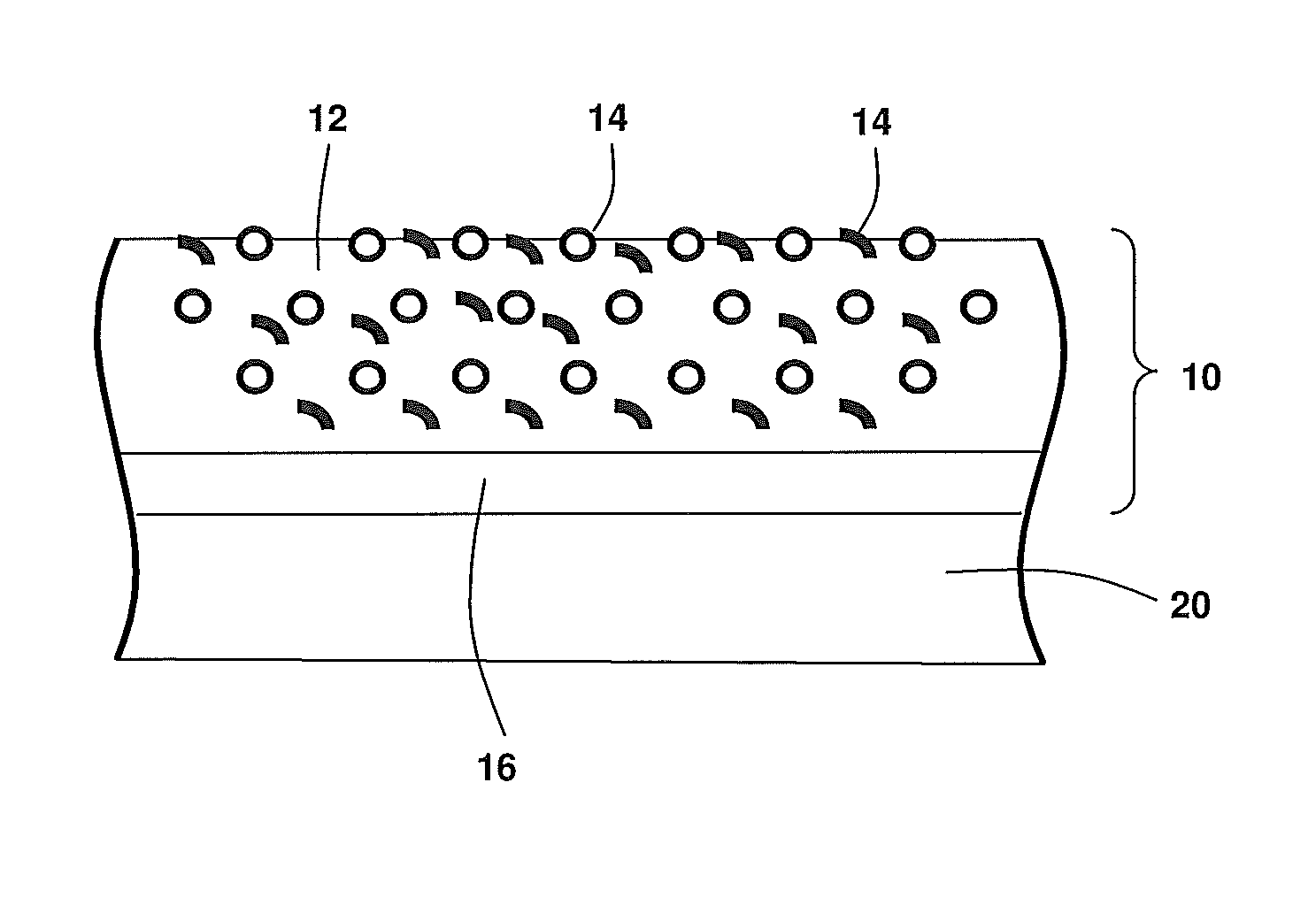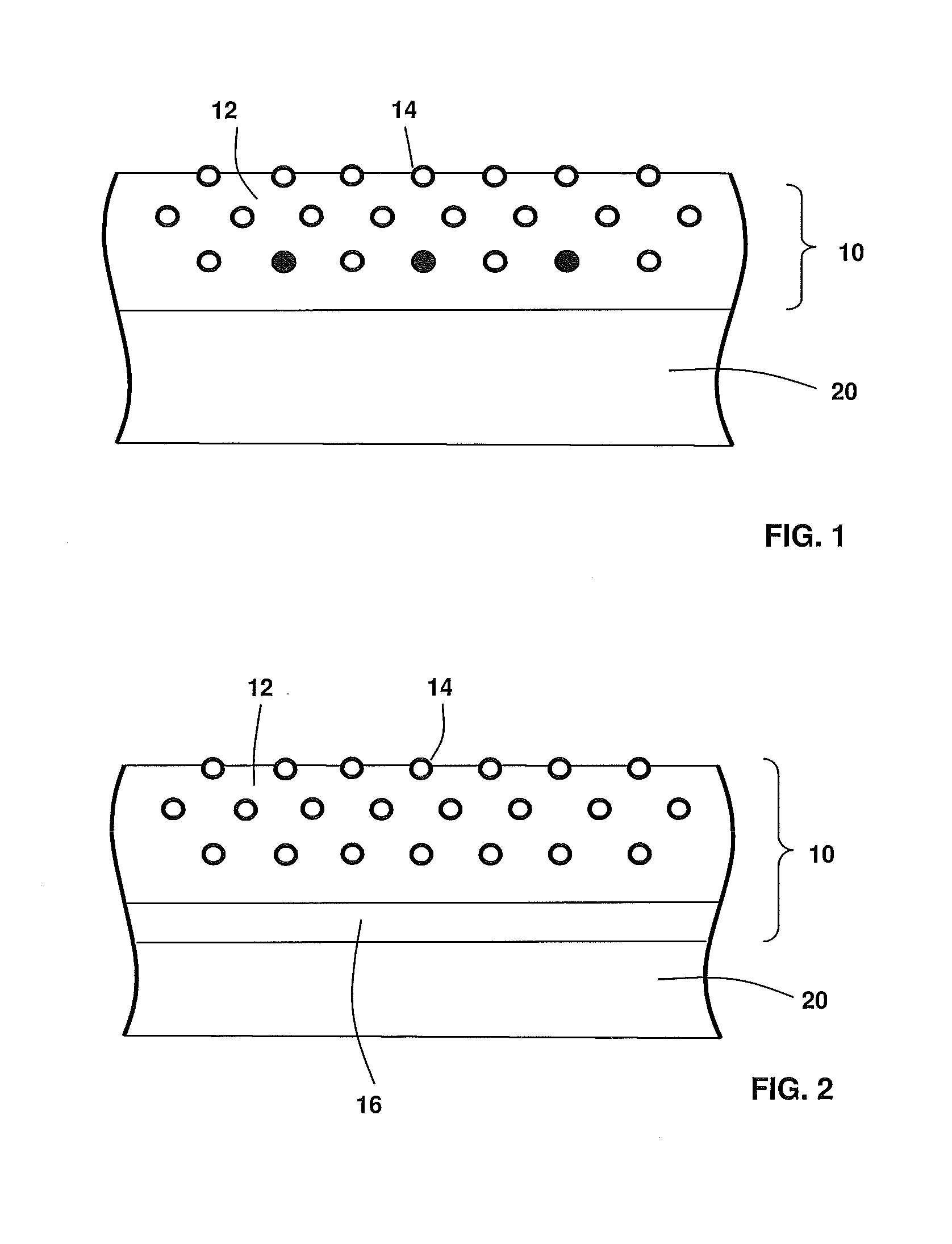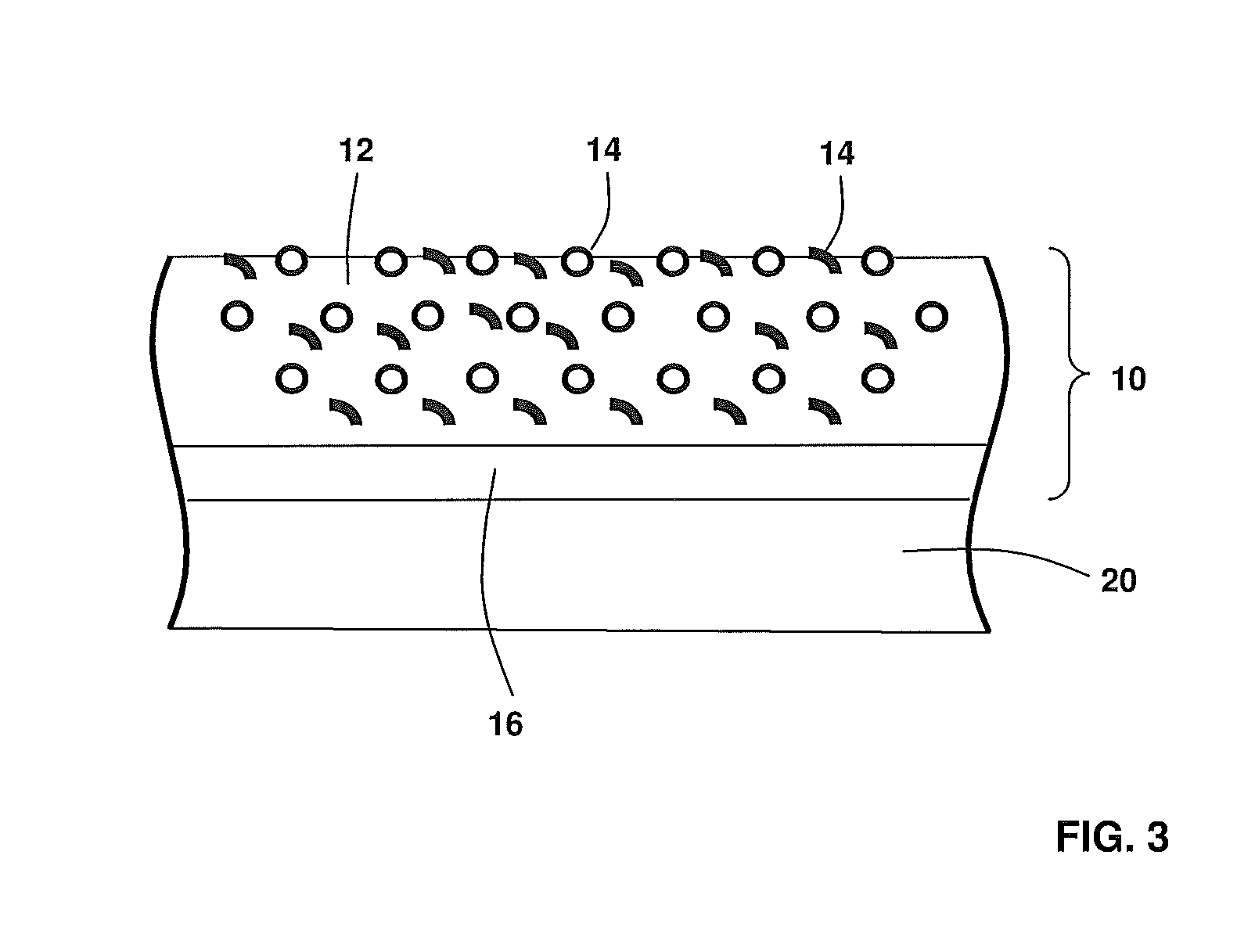Coatings for turbine parts
a turbine and coating technology, applied in the direction of superimposed coating process, liquid/solution decomposition chemical coating, machines/engines, etc., can solve the problems of material degradation, droplet erosion, increased dissipative losses, etc., and achieve the effect of simple and cost-effective solution
- Summary
- Abstract
- Description
- Claims
- Application Information
AI Technical Summary
Benefits of technology
Problems solved by technology
Method used
Image
Examples
Embodiment Construction
[0033]Throughout this specification the following terms have the following definitions
[0034]“Hydrophobic” is defined as a material with a contact angle, as measured by the static sessile drop method, between a solid surface of the material and a water droplet of greater than 90 degrees.
[0035]Siloxanes are defined as a functional group in organic silicon chemistry that has a Si—O—Si linkage. Siloxanes include polymeric hydrides, referred to as silicones or polysiloxanes that have the formulae H3—Si—[O—SiH2]n-O—SiH3 wherein hydrogen atoms may be substituted by halogens or organic groups.
[0036]The temperature resistance of specific polysiloxanes can be varied by varying the degree of cross linking and pyrolysis / hydrolysis in which there is a successive replacement of carbon containing end groups with oxygen to form SiO2. The result is an increase in the ceramic (SiO2) to organic ratio of the polysiloxane which increases the temperature resistance but typically has a detrimental effect ...
PUM
| Property | Measurement | Unit |
|---|---|---|
| temperatures | aaaaa | aaaaa |
| volume % | aaaaa | aaaaa |
| volume % | aaaaa | aaaaa |
Abstract
Description
Claims
Application Information
 Login to View More
Login to View More - R&D
- Intellectual Property
- Life Sciences
- Materials
- Tech Scout
- Unparalleled Data Quality
- Higher Quality Content
- 60% Fewer Hallucinations
Browse by: Latest US Patents, China's latest patents, Technical Efficacy Thesaurus, Application Domain, Technology Topic, Popular Technical Reports.
© 2025 PatSnap. All rights reserved.Legal|Privacy policy|Modern Slavery Act Transparency Statement|Sitemap|About US| Contact US: help@patsnap.com



